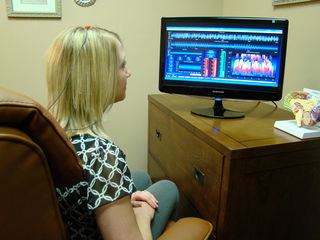Self-Control
Neurofeedback: A Remarkable Counseling Tool
Research demonstrates the efficacy of neurofeedback with many brain illnesses.
Posted August 18, 2016
For years my counseling goal has been to assist clients in the reduction of problematic symptoms. However after learning about neurotherapy and neurocounseling and becoming board certified in neurofeedback, my counseling goals have changed. I am still striving for symptom reduction, but my main goal is to assist my clients in emotional and physiological self-regulation.
I am able to facilitate those changes through neurotherapy by doing any strategy available to modulate or change the neurons. Talk therapy is a wonderful example of neurotherapy. We know counseling changes the brain!

Neurocounseling, bridging the brain and behavior, helps me teach interventions to my clients such as diaphragmatic breathing, heart rate variability, skin temperature control and many other needed biofeedback techniques. (I wrote about several of these in earlier blogs.) Neurocounseling techniques offer such intrinsic locus of control for clients. Many of my clients report that after practicing these self-regulation strategies they are more empowered and ready to take on other life problems.
However, for me and many of my clients with chronic symptoms, by far the most remarkable intervention is neurofeedback (NFB). This noninvasive, computer assisted interface is a type of neurotherapy that maps certain aspect of a client’s brainwaves to some form of feedback such as music, video or puzzles opening and closing. Sometimes I have heard NFB called “biofeedback for the brain.” Dr. Paul Swingle has written extensively about NFB and states it is a type of self-regulation training for the brain based upon the principles of learning and operant and classical conditioning.
Neurofeedback is not a new intervention. It was first used with NASA to help astronauts overcome seizures induced from jet fuels. NFB is gaining popularity in its use and continues to thrive as new empirical research continues to showcase its efficacy. Yucha and Montgomery have written thorough reviews of the research. These authors rated the combined efficacy of neurofeedback and biofeedback as a Level 4 treatment. Level 4 is ranked as “efficacious” through randomized, controlled and blind studies. NFB has been rated a Level 4 for anxiety reduction, attentional concerns, chronic pain, epilepsy and headaches.
I have been practicing NFB for six years now. I became board certified in neurofeedback (BCN) two years ago through Biofeedback Certification International Alliance (BCIA), www.bcia.org.
What I love about NFB is it is training the brain to self-regulate at the source of the problem…the brain. We know that dysregulation occurs from many sources such as genetic predispositions to head injuries to high fevers to substance abuse. There are many more sources, but sometimes just living life causes some dysregulation. By attacking the problem at its source, and because of the neuroplasticity of the brain, NFB helps the central nervous system to calm itself down enough to learn a better, more regulated and efficient way of functioning and living. For clients with severe symptoms and resistance to many other treatments, NFB has provided a new beginning and has offered hope. When the brain is more efficient, the brain is more receptive to learning and problem-solving.
NFB is a very subtle change process. My NFB clients, after a thorough electroencephalogram (EEG) assessment, fill out several self-reports for anxiety, depression, insomnia, ADHD, TOVA and trauma. Based up all the needed assessments, we build a treatment plan with a symptom checklist that has been prioritized from “most debilitating to least.” After ten sessions, we visit the checklist again and rate the progress as “the same, better or worse.” Based on the evaluations, some will complete as many as 20 or 40, twenty minute sessions with me. Usually we train at least twice per week, but some who travel may only attend once per week.
What I typically observe around session 10 is a person who is calmer, sleeping better and looking me in the eyes. Then I begin to hear comments that my clients don’t think are important, but I listen with excitement. One client came back from a family reunion and stated, “I actually had a nice time at our reunion. I am not sure why, but my family members were still dysfunctional, but they just didn’t bother me as much for some reason!” Another client who was struggling with depression and motivation came in and exclaimed, “I am not sure why but I decided to polish all my sterling yesterday. That was so weird. It is just not like me! “
I was searching for additional information on NFB and neurotherapy, and I just wasn’t finding the right resource. My husband, Ted, and I decided to write a “one-stop shopping” book for ourselves and others who might be interested. In 2014 Routledge published our book, Neurotherapy and Neurofeedback: Brain-based Treatment for Psychological and Behavioral Problems. If you are looking for more information, our book may be a good source. More than anything, though, I just want you all to know that NFB is out there. Do your own homework and research the efficacy of NFB in a reputable journal. I think if you are willing to do the research, you too, will find neurofeedback quite remarkable.
For more information on neurocounseling, make sure to check out the Bradley University Counseling Program at: http://onlinedegrees.bradley.edu/counseling/


